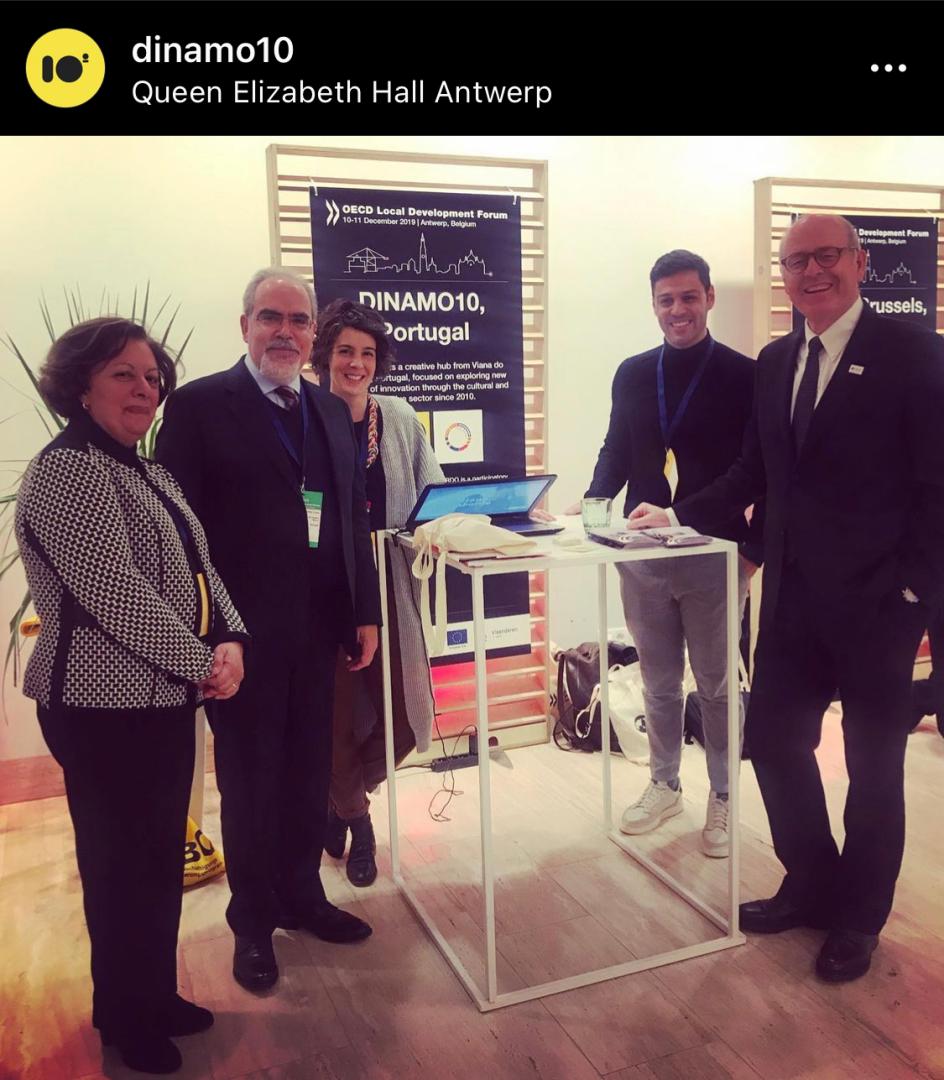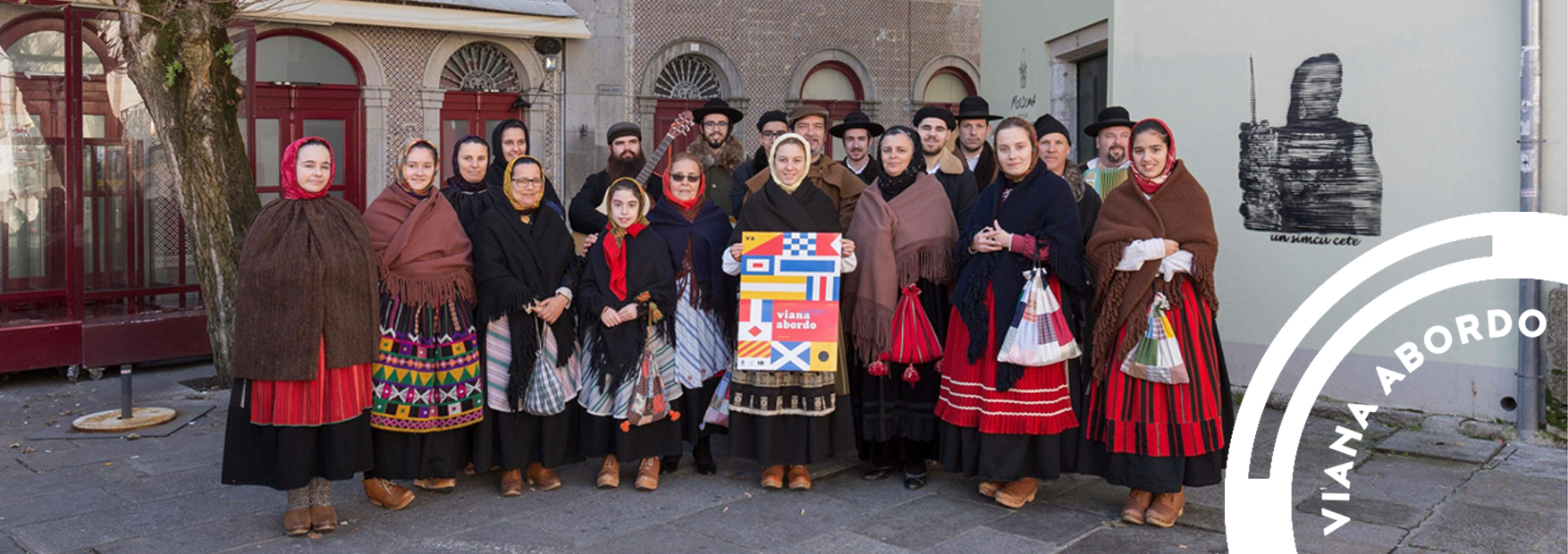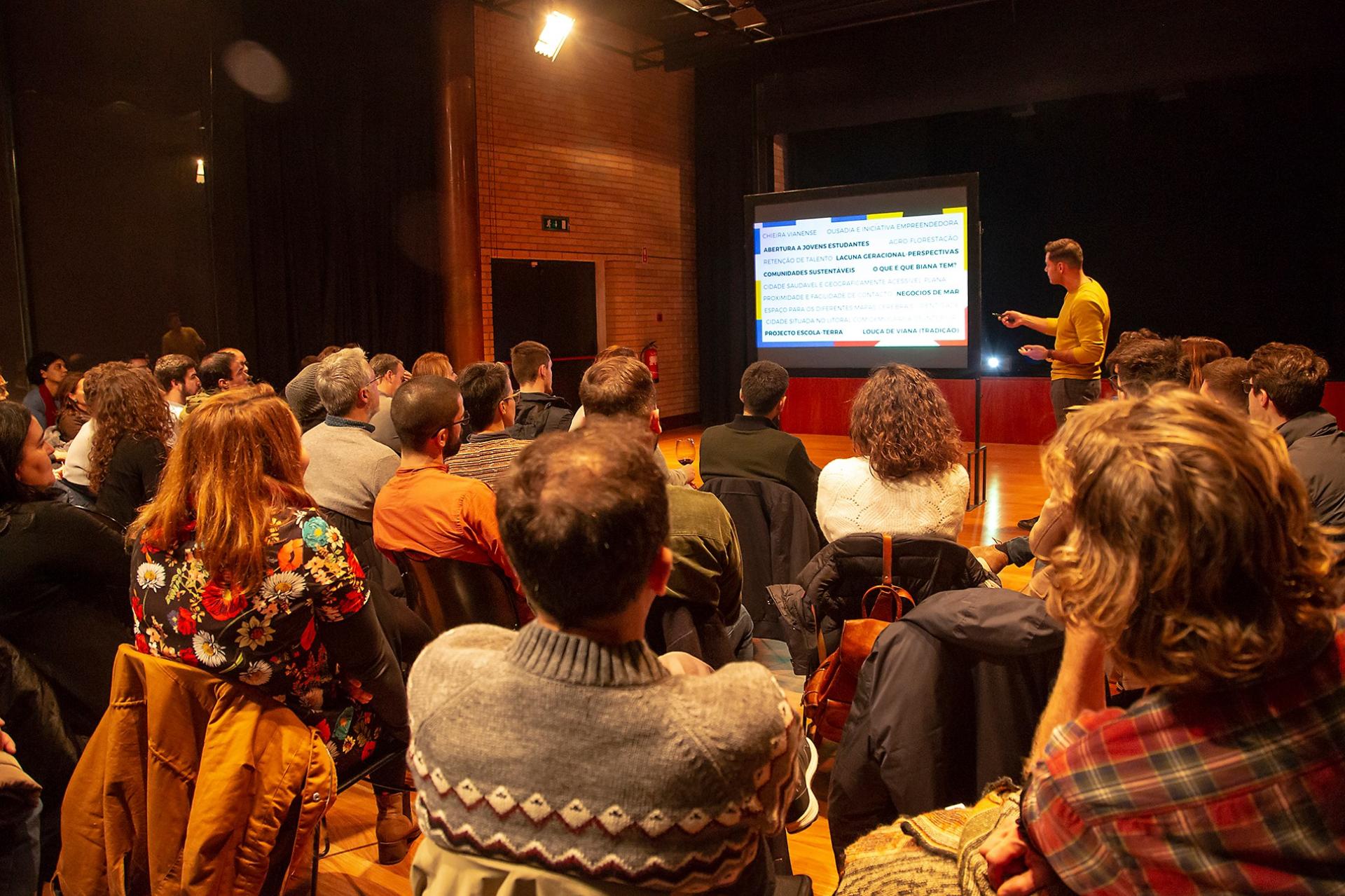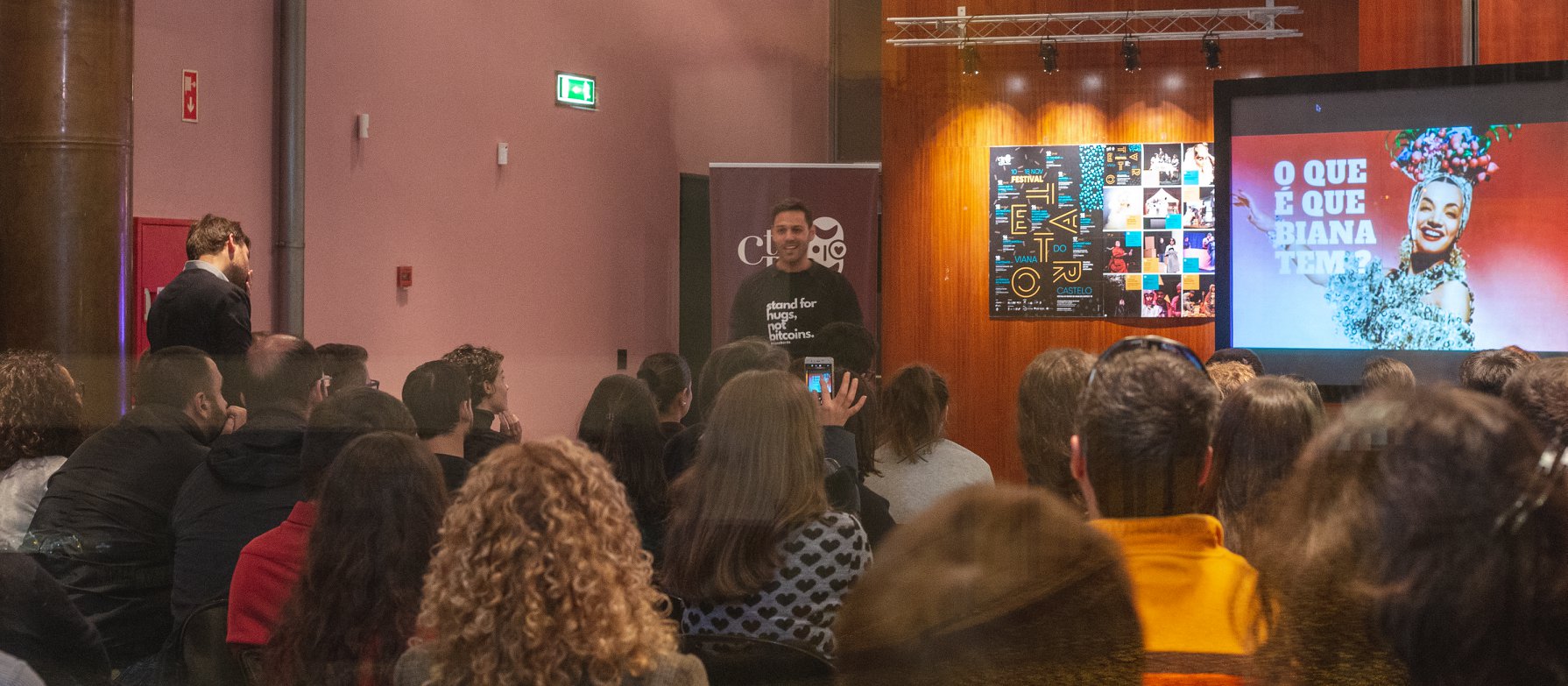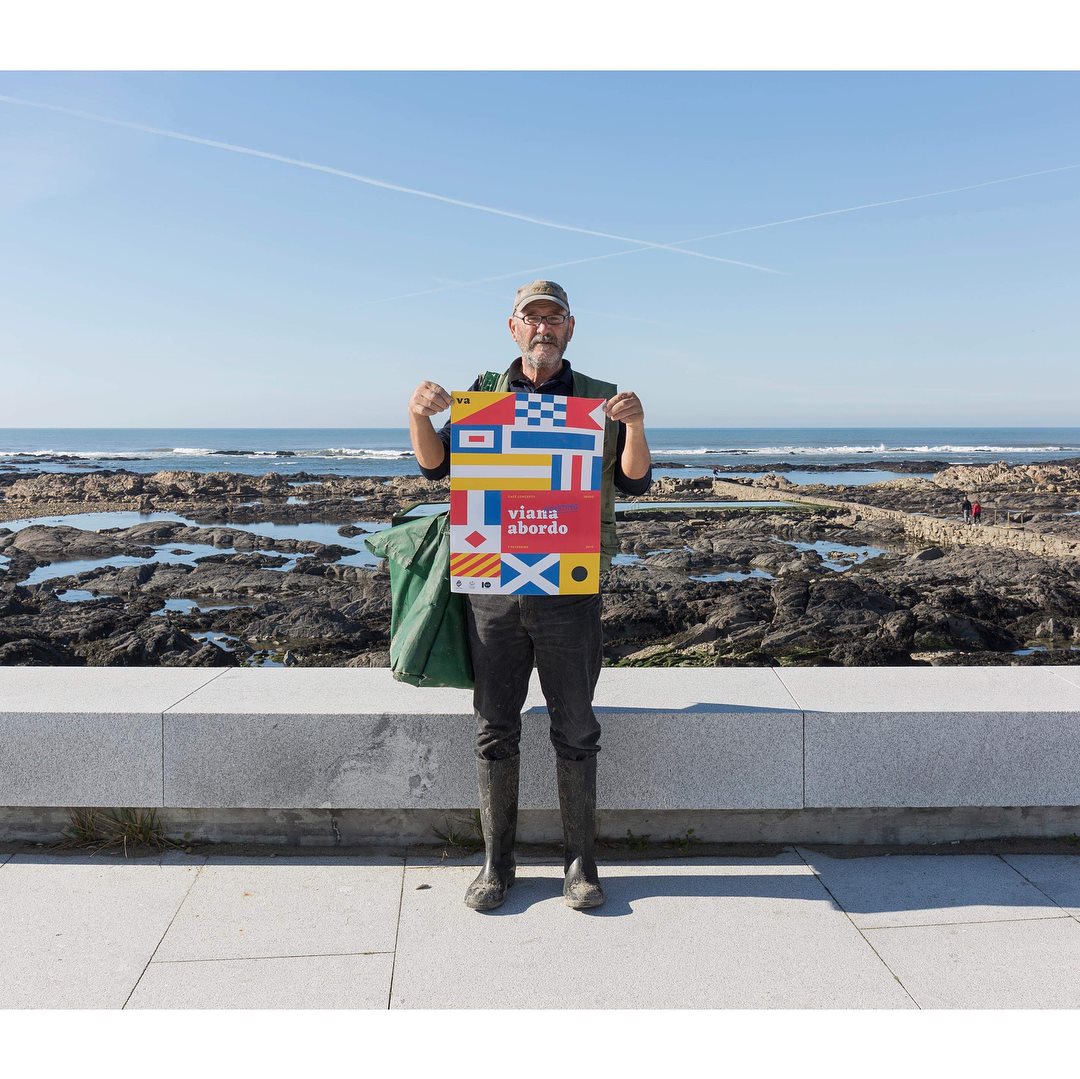Viana Abordo
Basic information
Project Title
Full project title
Category
Project Description
Once a month, there is a local community that promotes shared learning and collective intelligence.
"Viana Abordo" is a participatory event where local citizens, artists, students, entrepreneurs and policy makers are invited to participate in an open discussion towards the future of the city and to co-create possible solutions to tackle our regional challenges and foster emerging opportunities.
Geographical Scope
Project Region
Urban or rural issues
Physical or other transformations
EU Programme or fund
Which funds
Description of the project
Summary
The Viana Abordo project is a joint initiative of the Creative Hub Dinamo10 from Viana do Castelo, the Polytechnic Institute of Viana and the Viana do Castelo Municipality. It is an open social innovation initiative with the main objective of stimulating entrepreneurship and civic participation around global topics with local impact. In a perspective of implementing a quadruple helix model, it contemplated the active participation of citizens, academia, companies and policy makers, forming a common platform for sharing, learning and empathy. This dynamic proved to be highly effective in identifying the different actors involved as well as the available resources. In addition to the project's contribution to entrepreneurship and smart specialisation, it proved to have an impact on the public narrative and sense of belonging on the part of the local population, transforming and empowering it for a regular but effective and creative intervention.
Key objectives for sustainability
By implementing a quadruple helix model, it allowed us to convene as many actors as possible and take advantage of their knowledge and experience, thus forming the collective intelligence necessary to create a safe learning zone for everyone. This methodology has enabled the project to acquire not only the participation of all, but also to become sustainable from the point of view of the resources required, always having a way to validate all the inputs in the local community and to study some examples of good practice through guests from other regions and countries. The monthly sessions open to the community, somehow guaranteed that all the knowledge produced was returned and validated with the locals, thus guaranteeing the circularity factor of the project. All sessions took place in the rehearsal room of the local Municipal Theatre, also giving this space new functions with the community.
Key objectives for aesthetics and quality
The project started by creating a public narrative that convinced the locals to participate and feel inspired. At this first stage we decided to create an event poster inspired in the maritime culture and in the maritime alphabet that suggests symbols and colours that are understood by the sailors as a way of communication along their exploration journeys. Afterwards, the poster of each event or public session walked through the streets of the city, arousing curiosity and appealing to everyone's participation. This communication and narrative was also disseminated through the project's social networks and website. This poster phenomenon and its symbolism was associated with an artefact that made everyone's involvement and their sense of belonging to the project tangible.
Key objectives for inclusion
By organising monthly sessions open to the public, we were not only enriching the process, but also making it more diverse and inclusive. The open sessions that took place in the rehearsal room of the municipal theatre are proof of this, welcoming more than 350 citizens who were involved in the co-creation of solutions and new perspectives for the future of the city and the region.
Results in relation to category
Regarding the category of sense of belonging to which we applied, the Viana Abordo project achieved the following facts and figures:
-10 Monthly sessions (Every month, at the local theater rehearsal room, there's an open session for the local community.
- 2 sessions in educational institutions (In parallel to the monthly open session, there's a special session dedicated to young people in school age).
- 1 "outdoor" session (By invitation, we facilitated an "out-of-doors" session at another Municipality for networking and share good pratices.)
- + 350 citizens involved (During our first edition there were more than 350 citizens involved with the initiative.)
- 12 ideas/entrepreneurs supported (In addition to the open sessions, our mentoring program supported 12 business ideas/entrepreneurs.)
- + 50h of collective mentoring.
- + 20h of individual mentoring.
- A participation in the OECD annual event dedicated to local development.
How Citizens benefit
Citizens and civil society were given more emphasis in the monthly public sessions where they were confronted with inputs and learning questions in order to cultivate their participation and critical thinking. This approach allowed to consistently validate the work with the population but also to constantly feed the exploratory work that the citizens themselves carried out in the different creative sessions.
Physical or other transformations
Innovative character
The differentiating factor of this project comes not only from its open and participatory innovation methodology, but also from the public narrative developed that encourages a broader participation but which also results in the stimulation of a sense of belonging on the part of all involved. The fact that the monthly sessions take place in a space in the cultural and creative public domain is another important factor, as it brings new audiences to it and ends up providing this public facility with new functions and attractiveness. Contrary to current practices, this project favours a strong exploratory component at the local level, which facilitates the identification of resources, mapping of constraints and opportunities. This exploratory and participatory component turns out to be crucial for the correct applicability and implementation of the different solutions in each territory.
Learning transferred to other parties
The quadruple helix methodology applied to this project and also the open innovation processes turns this project open for transferring to other contexts, always subject to a prior exploration and field work.
Like exposed in our above mentioned answer, this project may address to different challenges and produce different levels of learning for every actor involved.

